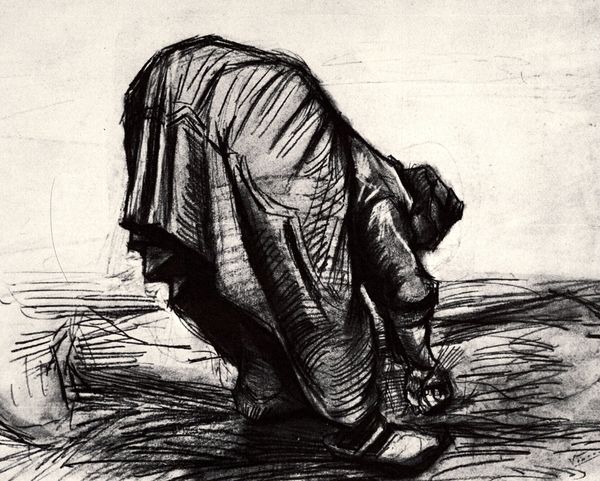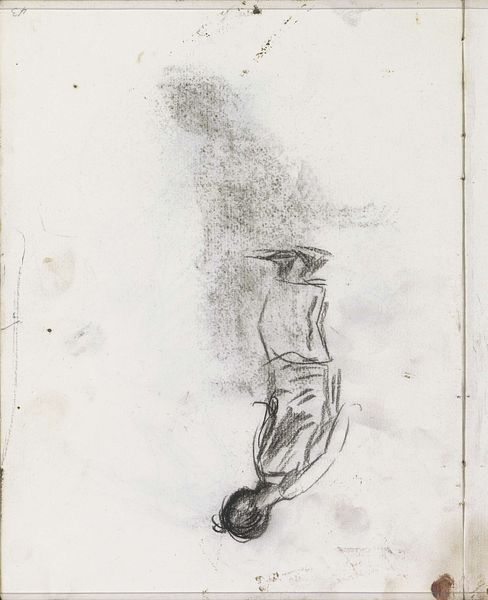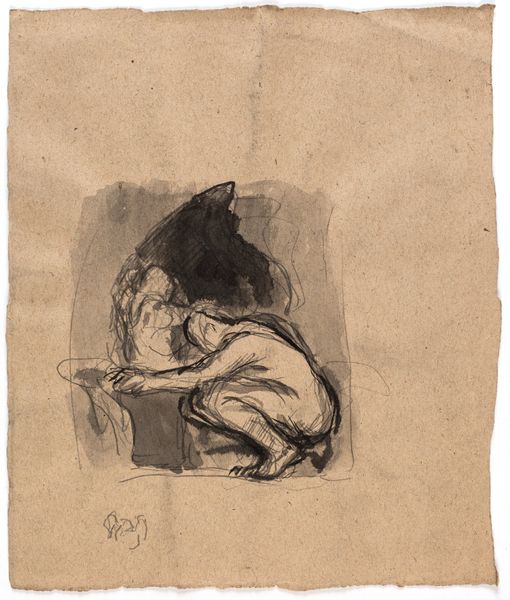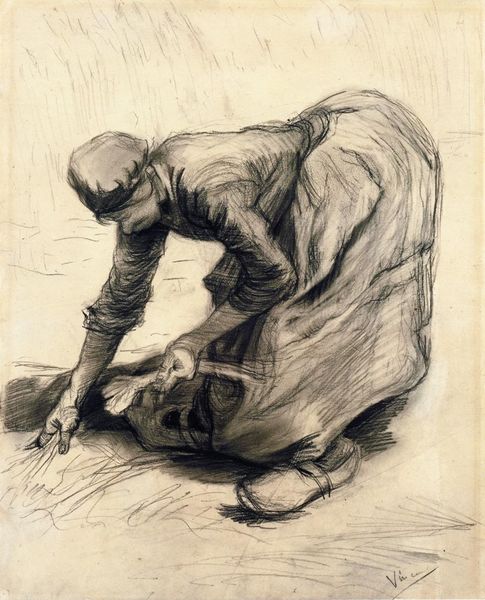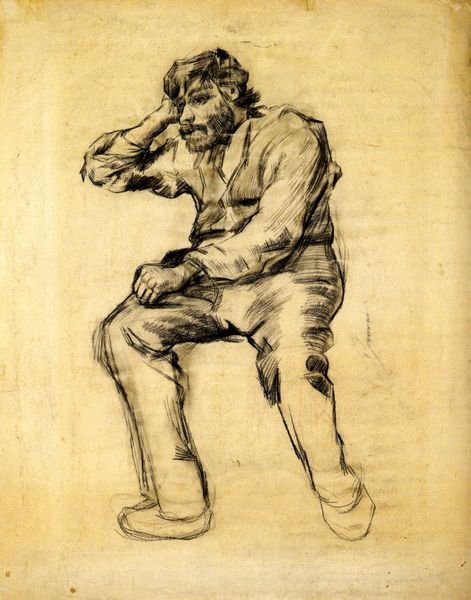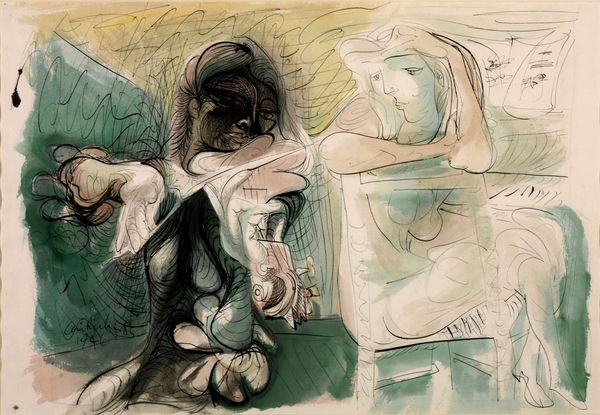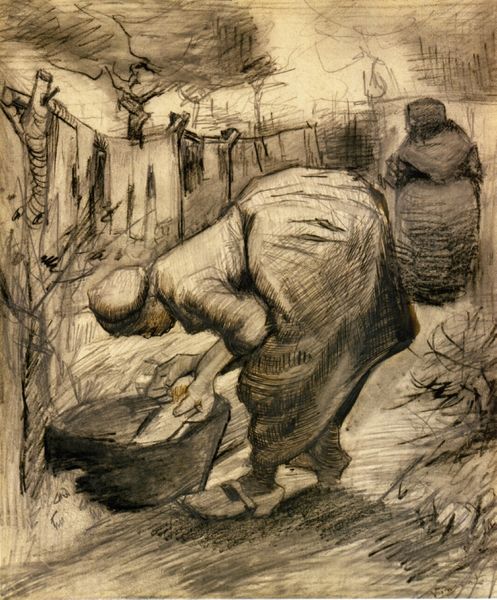
drawing, charcoal
#
pencil drawn
#
drawing
#
impressionism
#
landscape
#
charcoal drawing
#
pencil drawing
#
folk-art
#
sketch
#
charcoal
#
history-painting
#
post-impressionism
#
realism
Copyright: Public domain
Curator: Vincent van Gogh rendered this charcoal and pencil drawing, entitled "Peasant Woman Binding Sheaves," around 1885. It resides currently in the Van Gogh Museum. Editor: Gosh, it’s all dark angles and exhausting work, isn’t it? The stark contrast just shouts 'backache' to me. You can almost feel the weight of those sheaves, a back breaking load, both literally and figuratively I think. Curator: Indeed. The drawing's power lies in its raw portrayal of labor. Note the concentrated, almost architectural composition of the figure – how the bending back mirrors the curve of the bundled wheat. Semiotically, the lines represent not just form, but a physical burden and social positionality. Editor: Right, but there’s also this incredible tenderness here. I imagine Van Gogh watched this woman, saw something vital in her struggle. I reckon he identified with the unseen and unheard people. What strikes me, beyond the physical rendering, is an empathy that cuts through the austerity. Curator: Undoubtedly. The realist elements serve a potent empathetic function, yes. But consider the influence of the Hague School visible in its tones, coupled with Van Gogh’s gestural marks as structural tools—not merely descriptive, but acting as an evocative method. Editor: Method, shmethode! It just bleeds truth, doesn't it? Looking at those hands…those rough, calloused hands…they speak volumes beyond any "evocative method." You feel the grit between your fingers, and the sun beating on your back! It’s rough magic. Curator: True. The indexical relationship to reality is intense. Yet, what distinguishes it within Post-Impressionism is its intense study of rural labor—not just pastoral prettiness, but also the structural components of toil. It presents work in direct form and experience. Editor: Well, seeing this drawing lets you dream back to that world, a world both far away and somehow eternally present, slaving, back breaking. It also lets you dream back to that specific moment when Van Gogh stood there observing it, a little crazy spark flashing inside him that became, finally, this image. Curator: The ability to translate human experience in art is definitely important to note in the context of Van Gogh's whole career. It is a study that rewards extended formal analysis. Editor: For me, it's just this woman's resilience. Bending but never breaking, like that wheat she’s binding together with fierce tenderness. It's lovely.
Comments
No comments
Be the first to comment and join the conversation on the ultimate creative platform.
